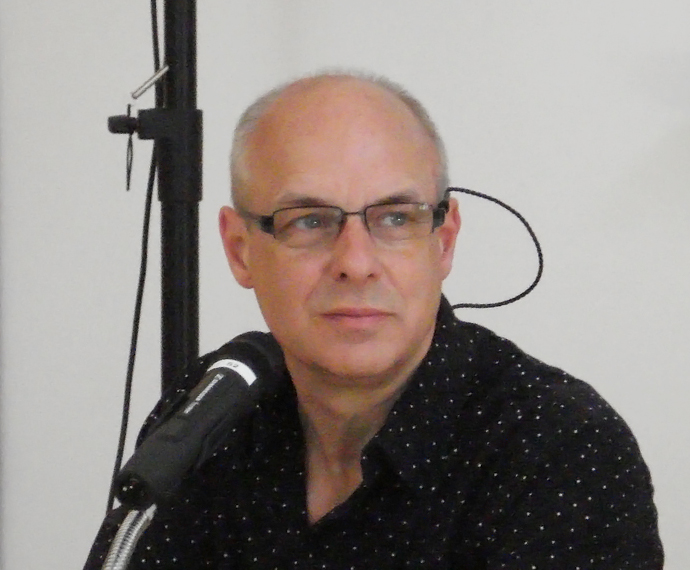Imagine your favorite works for the piano—the delicate and haunting, the thundering and powerful. The minimalism of Erik Satie, the Romanticism of Claude Debussy or Modest Mussorgsky, the rapturous swooning of Beethoven’s concertos. Maybe it’s Jerry Lee Lewis or Little Richard; Thelonious Monk or Duke Ellington. Tom Waits, Tori Amos, Rufus Wainwright, Prince… you get the idea.
Now imagine all of it never existing. A giant hole opens up in world culture. Catastrophic! Or maybe, I suppose, we’d never know the difference. But I’m certain we’d be worse off for it, somehow. The piano seems inevitable when we look back into music history. Its immediate predecessors, the clavichord and harpsichord, so resemble the modern piano that they must have evolved in just such a way, we think. But it needn’t have been so.
The harpsichord, writes Georgia State University’s Hyperphysics, “has a shape similar to a grand piano,” but its operation prevents one critical musical property: dynamics—“the player has no control over the loudness and quality of the tone.” On the whole, every innovation of the harpsichord’s design aimed to solve this problem. Over the instrument’s 400-year history, none of them did so as elegantly as the piano, invented around 1700 by Bartolomeo Cristofori. In the video above, you can hear a slightly later version of his instrument from 1720 played by pianist Dongsok Shin—an excerpt from one of the first pieces of music ever written for the instrument.
Cristofori called his design the gravecembalo col piano et forte, “keyboard instrument with soft and loud” sounds. This soon shortened to simply pianoforte. It’s interesting that the word for “soft” eventually became its sole name. For all its grandeur and thunderous capability, it’s the piano’s softness that so often captures our attention—the ability of this lumbering beast of an instrument to pull its punches and move with quiet grace. As you’ll probably note in Shin’s demonstration, the earliest pianos still retained a bit of the harpsichord’s twang, but we can also clearly discern the woody thumps, rumbles, and tinkling highs of modern pianos. (Compare it to this, for example.)
True to its name, the “quiet nature of the piano’s birth around 1700,” writes the Metropolitan Museum of Art, “comes as something of a surprise.” It was invented “almost entirely by one man,” Cristofori, whose expertise had made him steward of Florentine Prince Ferdinando d’Medici’s entire collection of harpsichords and other musical instruments. The first mention comes from a 1700 Medici inventory describing a harpsichord-like instrument “newly invented by Bartolomeo Cristofori with hammers and dampers, two keyboards, and a range of four octaves, C‑c.” The first pianos had 54 keys rather than 88, and used “small wooden hammers covered with deerskin.”
Other makers tried different mechanisms, but “Cristofori was an artful inventor,” the Met remarks, “creating such a sophisticated action for his pianos that, at the instrument’s inception, he solved many of the technical problems that continued to puzzle other piano designers for the next seventy-five years of its evolution.” These designers made shortcuts, since Cristofori’s “action was highly complex and thus expensive.” But nothing matched his design, and those features were “gradually reinvented and reincorporated in later decades.”
Cristofori’s ingenious innovations included an “escapement” mechanism that enabled the hammer to fall away from the string instantly after striking it, so as not to dampen the string, and allowing the string to be struck harder than on a clavichord; a “check” that kept the fast-moving hammer from bouncing back to re-hit the string; a dampening mechanism on a jack to silence the string when not in use; isolating the soundboard from the tension-bearing parts of the case, so that it could vibrate more freely; and employing thicker strings at higher tensions than on a harpsichord.
The piano Shin plays above is the oldest surviving instrument of Cristofori’s design, and it resides at the Metropolitan Museum of Art. Only “two other Cristofori pianos survive today,” notes CMuse, “in Rome and another at Leipzi University.” This instrument might have represented an elegant dead end in musical evolution. Though Baroque composers at the time, including Johann Sebastian Bach, “were aware of it,” most, like Bach, harbored doubts. “It was only with the compositions of Haydn and Mozart” decades later “that the piano found a firm place in music.” A place so firm, it’s nearly impossible to imagine the last 250 years of music without it.
via CMuse
Related Content:
Musician Plays the Last Stradivarius Guitar in the World, the “Sabionari” Made in 1679
Why Violins Have F‑Holes: The Science & History of a Remarkable Renaissance Design
Musicians Play Bach on the Octobass, the Gargantuan String Instrument Invented in 1850
Josh Jones is a writer and musician based in Durham, NC. Follow him at @jdmagness




